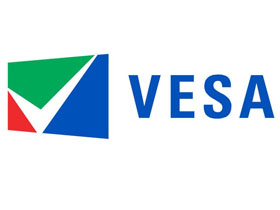VESA Forms Special Group To Establish XR Standards
The Video Electronics Standards Association (VESA) announced that it formed a special interest group to establish standards for VR and AR.
VESA is responsible for several of the standards with which you're already familiar. It defined the DisplayPort, Embedded DisplayPort, and Extended Display Identification Data standards as well as the DisplayID extension. Those standards are used to make sure you don't have to worry much about compatibility issues when you purchase a new monitor, graphics card, or cable. VESA wants similar ideas to apply to VR and AR products.
Here's what VESA said about its goals in a press release:
[W]hile many developers are focusing on enhancing the user experience and making products more interoperable, the lack of standardization is causing compatibility issues between products from different vendors, as well as increasing the complexity and cost of development, ownership and replacement. Lack of compatibility can also create confusion for end users and impede broader acceptance of AR/VR products.
It sounds like VESA is proposing a competitor or counterpart to the OpenXR Working Group revealed in February. That group is working on the OpenXR standard (who'd have thunk?) to make developing XR software for multiple platforms easier than it is now. Devs who want to release VR experiences on multiple platforms currently have to navigate a tangled web of APIs, SDKs, and game engines. OpenXR is supposed to change that.
But the OpenXR Working Group is focused primarily on software. VESA wants its working group to look beyond the software to bolster hardware compatibility. That isn't to say that VESA will ignore software--it just won't be the only focus. These "missions" will define the working group:
Establish the hierarchical structure for AR/VR services, including physical connections, data transfer protocols, software drivers and application layers Define the basic communication data structure and communication channel between the source and sink devices Study the related technologies and algorithms, and standardize them to enable economic and efficient implementation Suggest any changes to existing VESA standards that may be needed for better AR/VR support
Get Tom's Hardware's best news and in-depth reviews, straight to your inbox.
One of Arthur C. Clarke's three laws is that "any sufficiently advanced technology is indistinguishable from magic." That law could be changed to "any sufficiently popular technology is bound to attract various standards bodies." This is true of the Internet of Things (IoT), High Dynamic Range (HDR) content, wireless charging, and basically every other category with mainstream appeal. It's no surprise that VR and AR have followed that trend.
VESA said this special interest group is open to members and non-members alike. Companies interested in joining the group can email info@vesa.org to learn more.

Nathaniel Mott is a freelance news and features writer for Tom's Hardware US, covering breaking news, security, and the silliest aspects of the tech industry.
-
GeoffCoope This is not feasible, a lot of these technologies are still being worked on and when one appears it is superseded by another very quickly. It is far too early for standards to emerge.Reply
